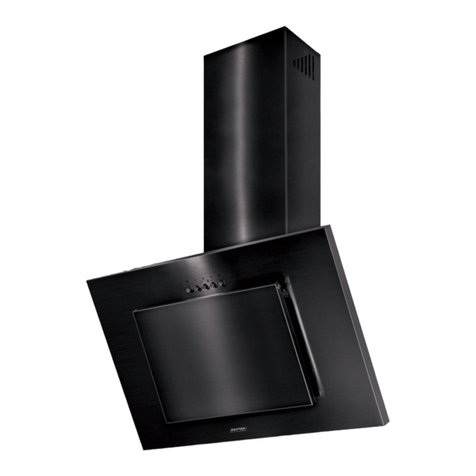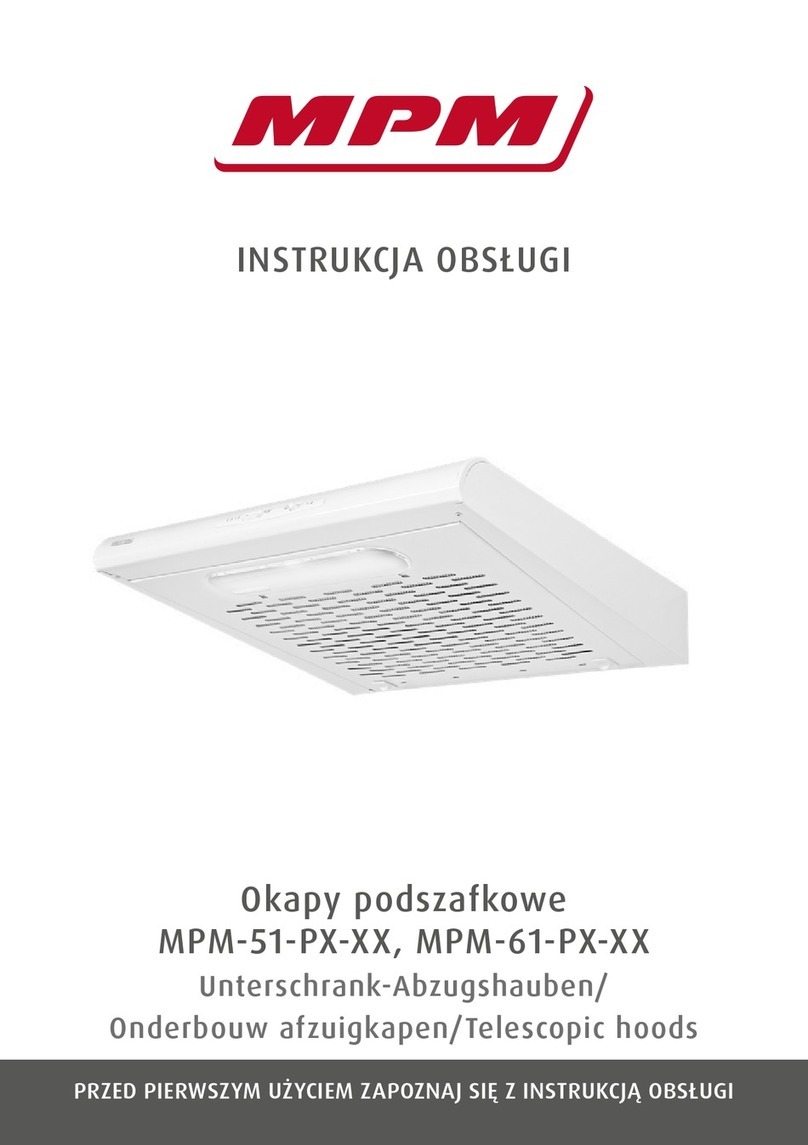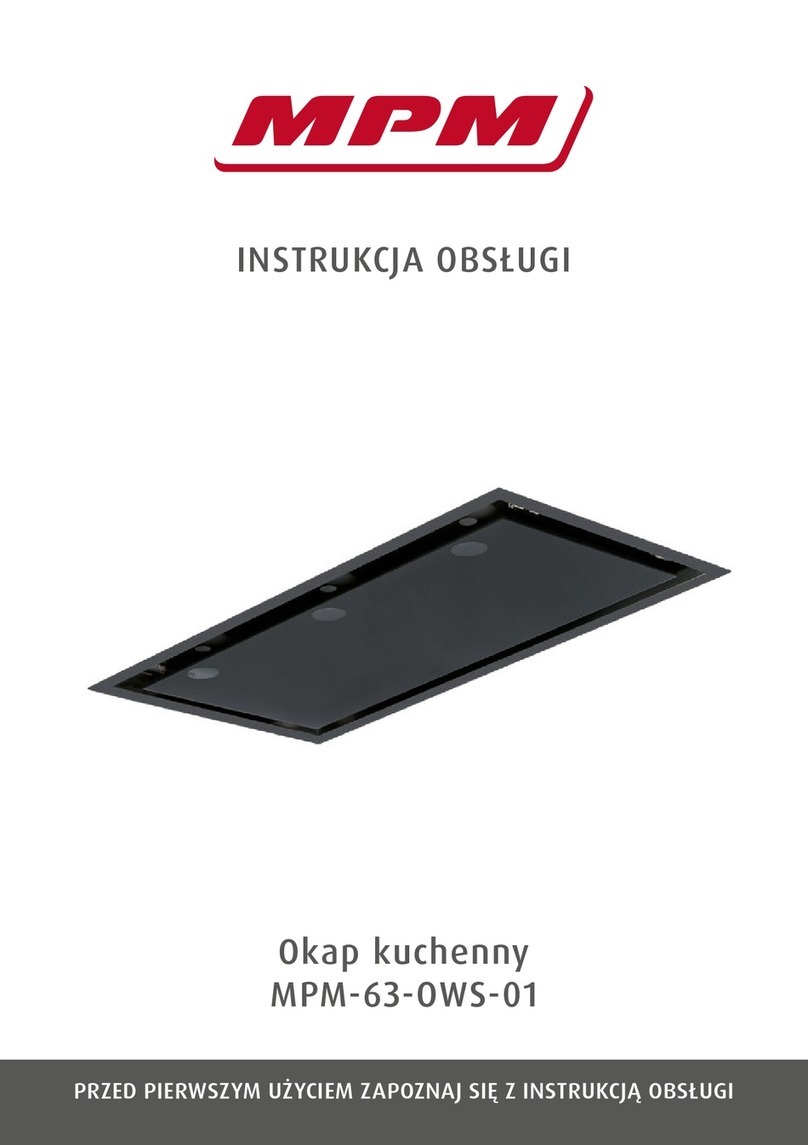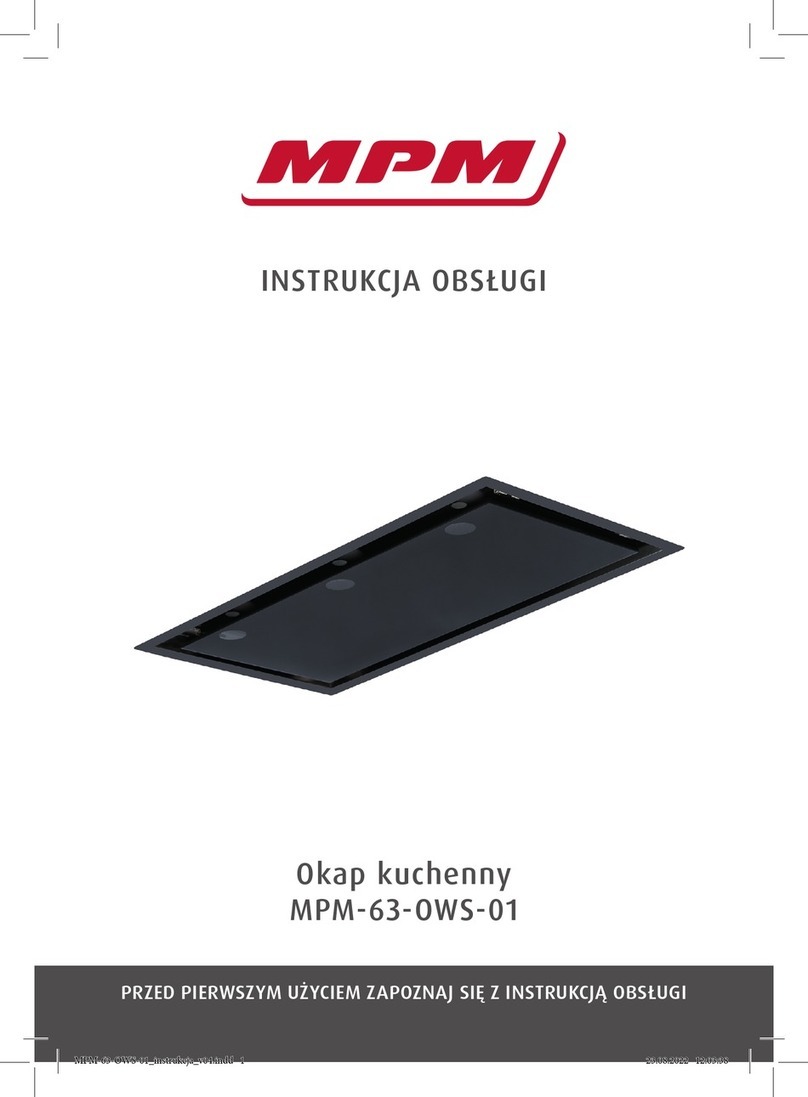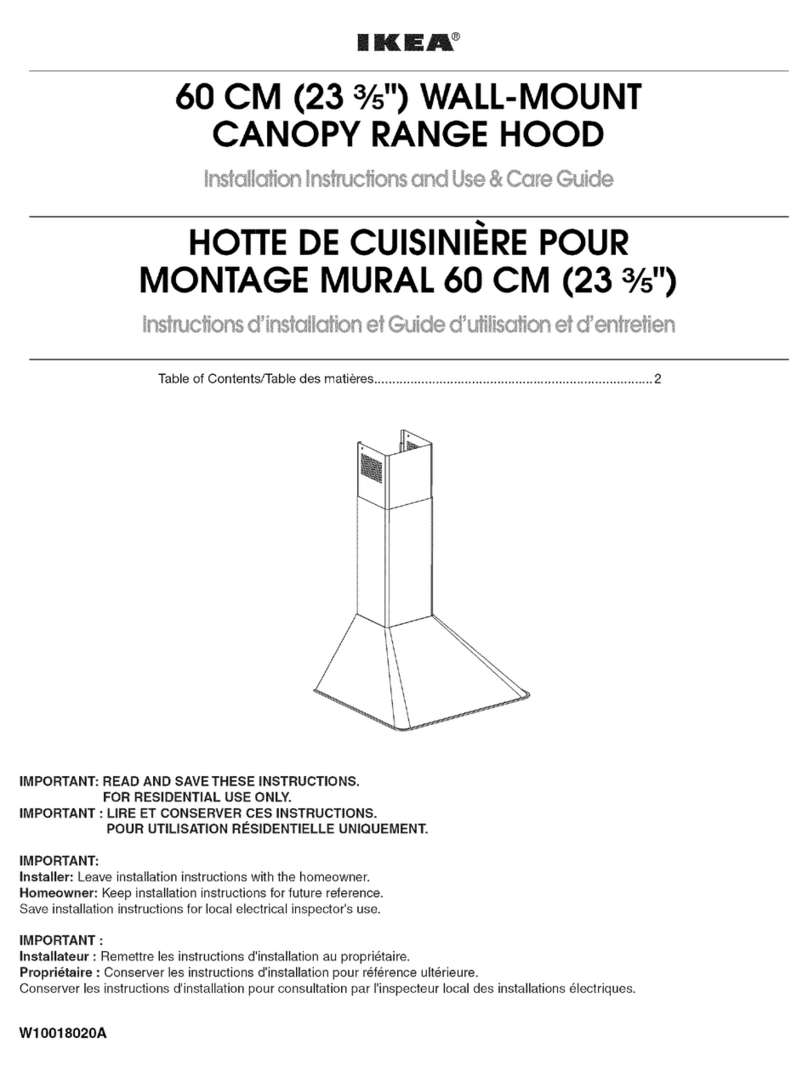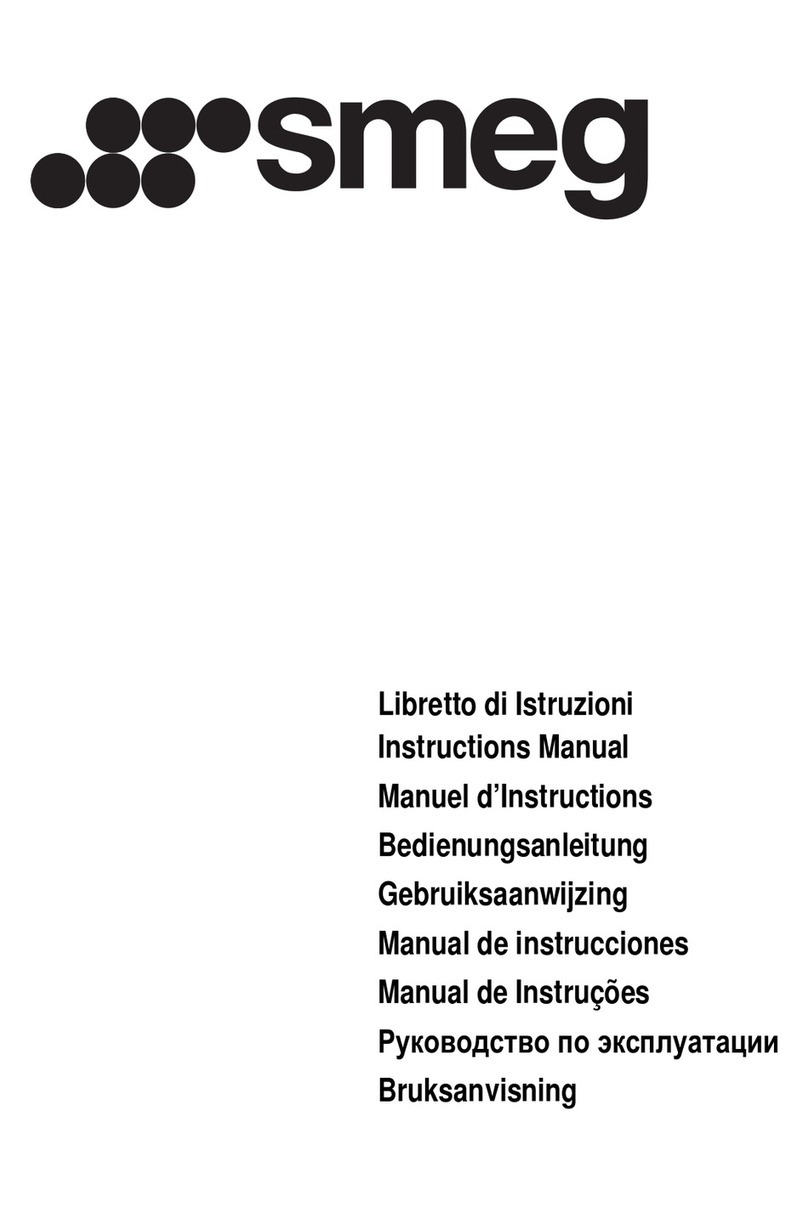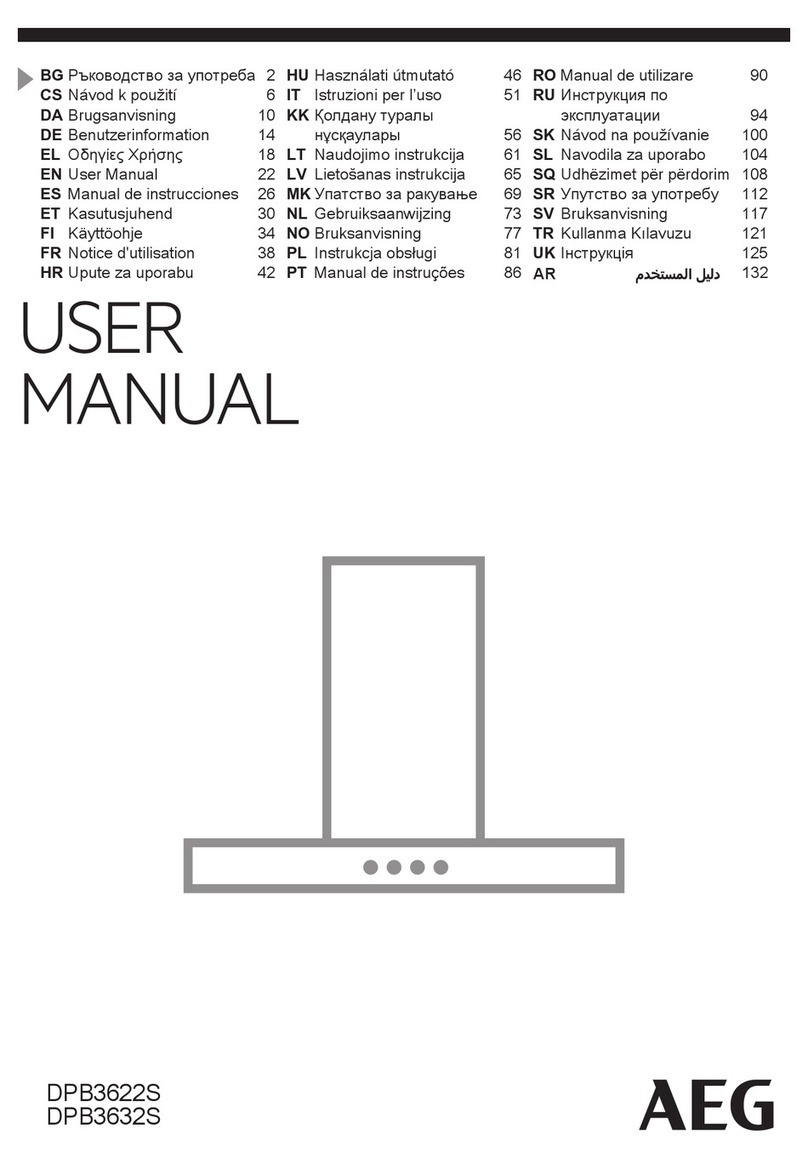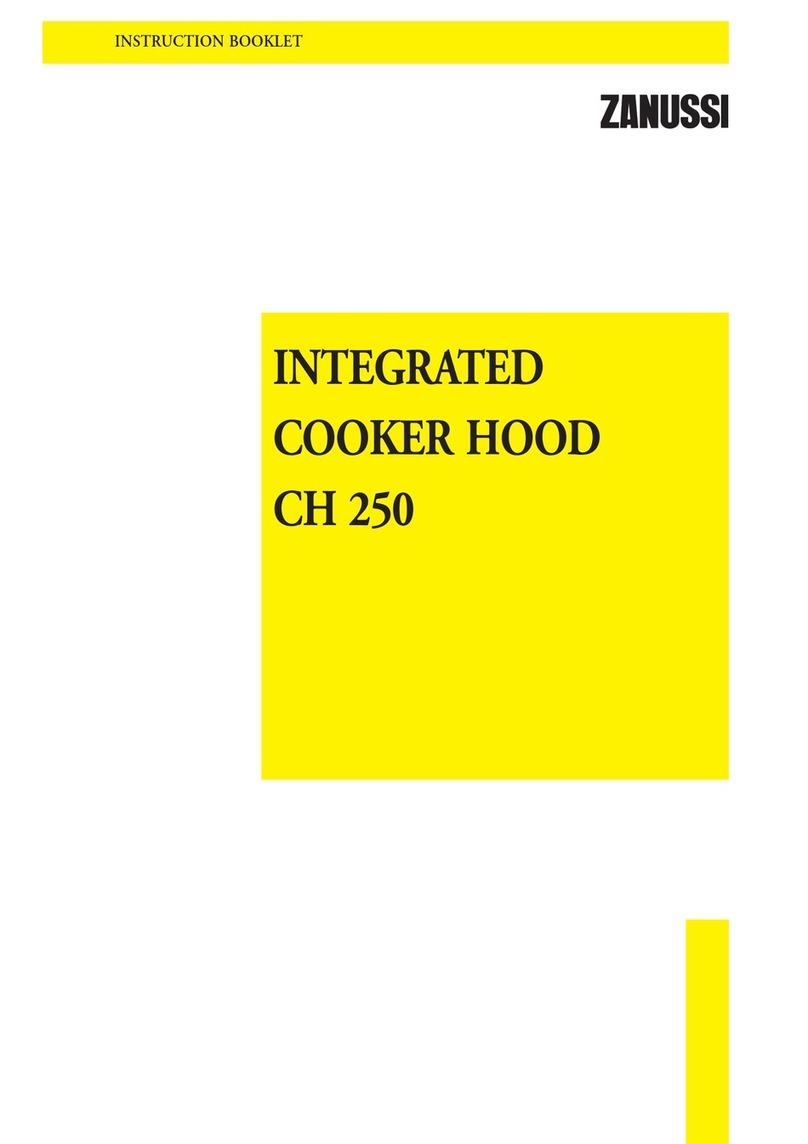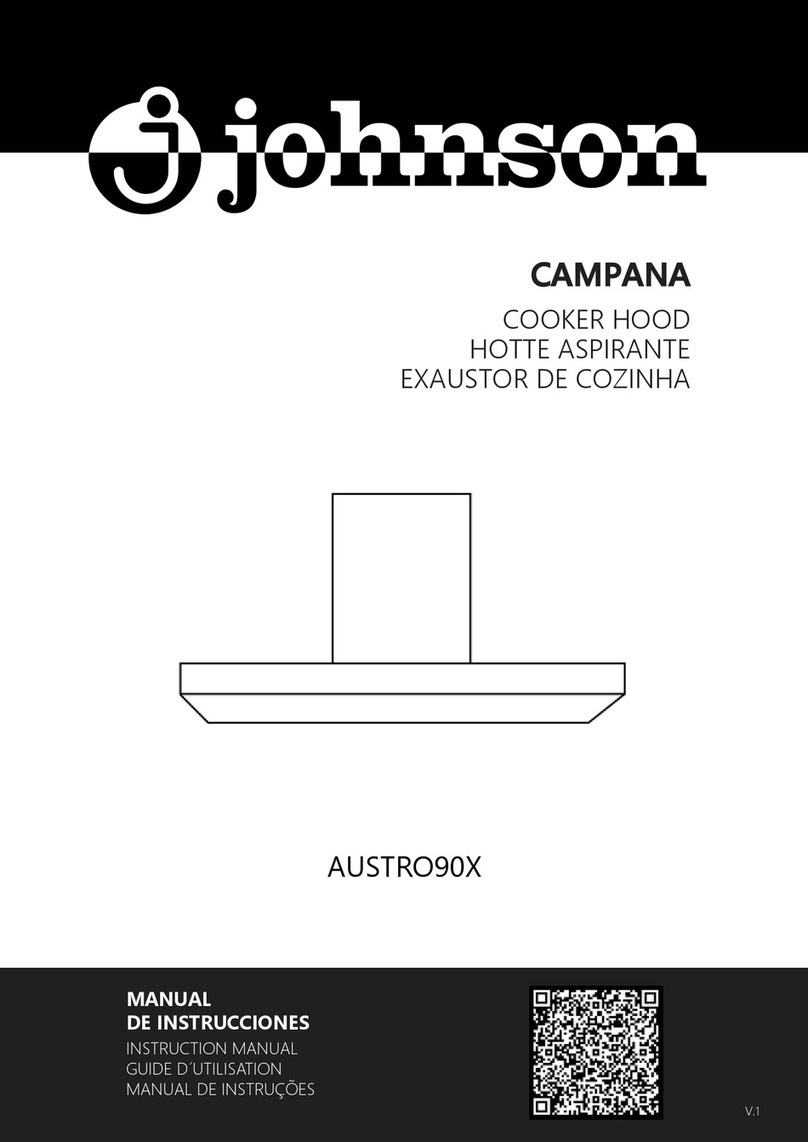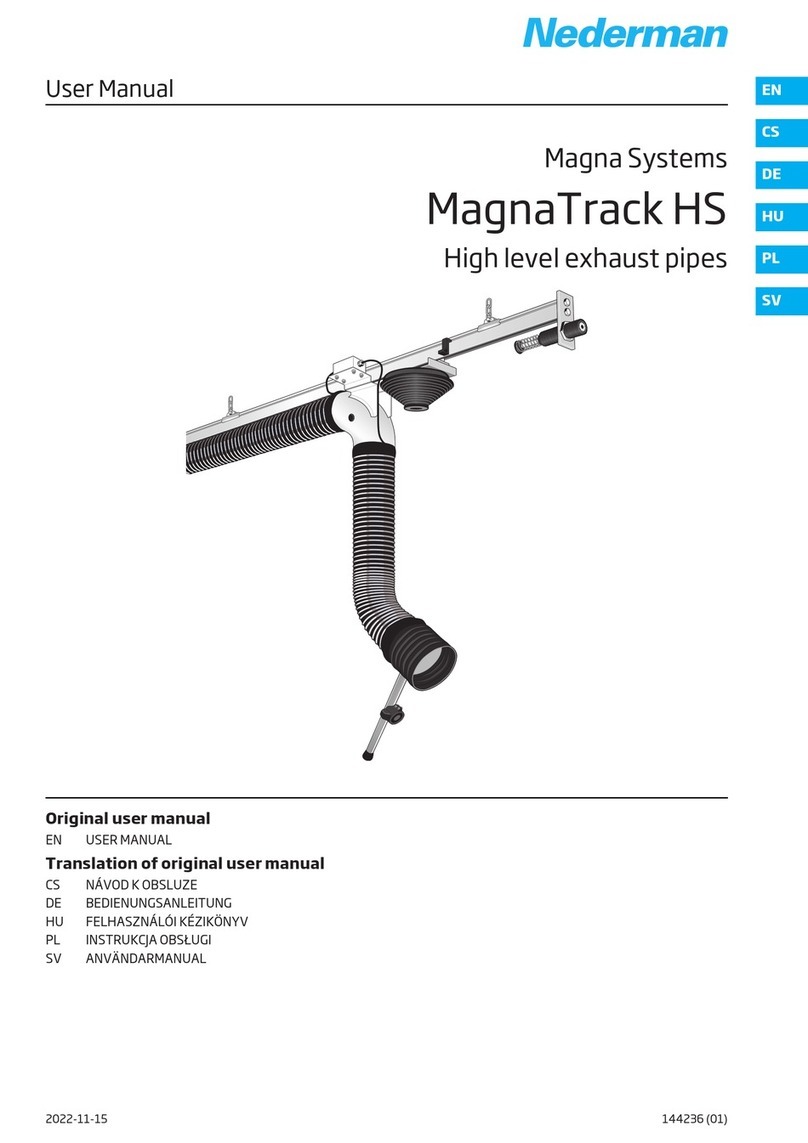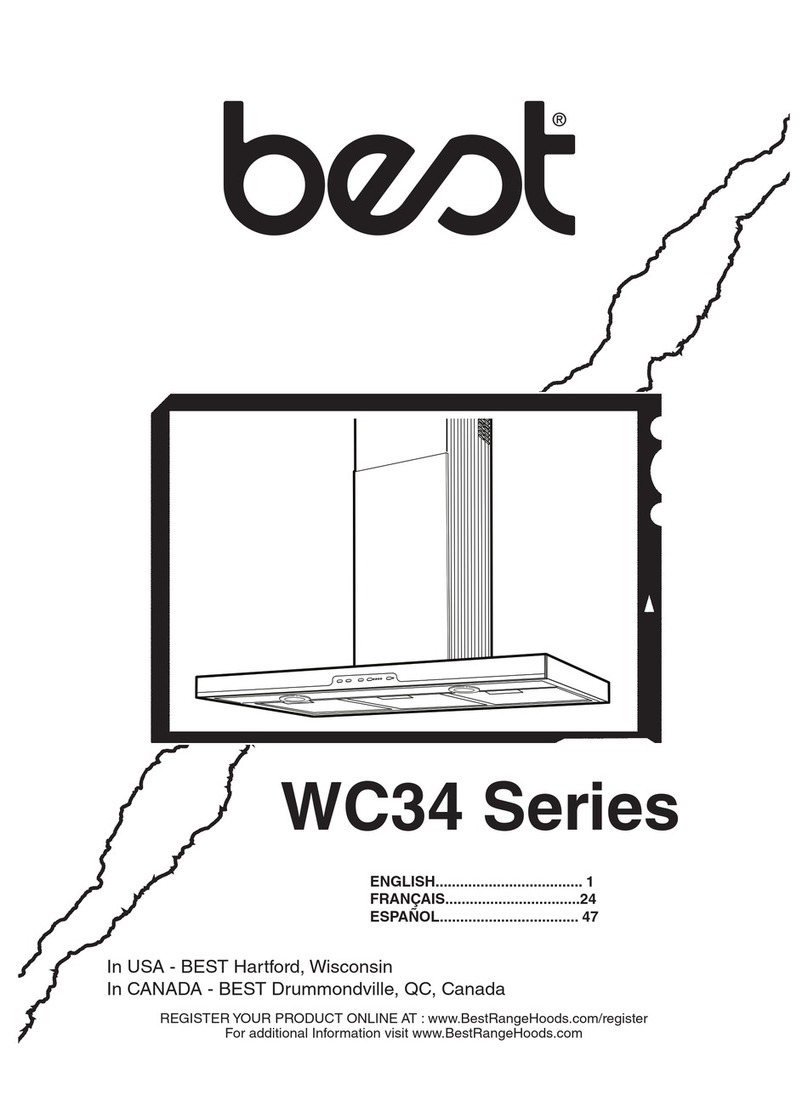MPM MPM-50-PX-51 User manual

MPM agd S.A.
ul. Brzozowa 3, 05-822 Milanówek
Tel. +48 22 380 52 00
Fax: +48 22 724 70 00
www.mpm.pl
MPM-50-PX-51,52
MPM-60-PX-61,62
Under Cabinet Range Hood Operation Manual

Dear Customers,
Thank you for your trust and purchasing of our product. Our device was
designed in order to meet your expectations in terms of functionality and
esthetics. It will certainly become a practical and decorative element for every
kitchen. We hope that the device will serve you for many years.
Before starting the range hood assembly, please read attentively this
Operation Manual. It will allow you to avoid any mistakes in course of
installation, and problems in course of range hood operation.
The cooking range hood is designed for household application, and is
used for elimination of vapors and odours arising during the cooking process.
NOTE: The Manufacturer is not liable for any damages arising
due to the incorrect assembly or failure to comply with the
requirements of this Operation Manual.
- Caution, please pay attention to the highlighted text.

General safety and assembly requirements
•This Operation Manual shall be maintained, in order to be
able to use it in every further moment.
•Read this Operation Manual attentively, as it contains the
detailed information regarding the installation, assembly and
maintenance of the hood.
•The hood appearance may differ from the hood presented at
drawings in this Manual, however all recommendations
regarding the operation, maintenance and assembly of the
hood remain unchanged.
•Do not make any electrical or mechanical changes in the
hood construction.
•Do not connect the device to power before finishing the
assembly.
•Any assembly or maintenance operations shall be performed
in the protective gloves.
•Do not use the hood without the correctly installed filter.
•The assembly non-complying with this Operation Manual,
may cause the electrical shock danger.
•Do not use the open flame under the kitchen hood.
•The meals cooked on the fat base shall be constantly
controlled, as overheated fat may flame out easily.
•The air sucked by the hood may not be withdrawn into the
chimney channel used for extraction of the combustion gases
from gas or other fuel devices (does not apply to the closed
circuit hoods).
•If any other non-electric devices are used in the house
besides the hood (for example, liquid fuel furnaces, blow-
through heaters, boilers), the sufficient ventilation of air (air
supply) shall be ensured.

•Do not disconnect the plug from the socket drawing the
power cable.
•The power cable may not touch the hot surface.
•Do not start the device if the power cable is damaged.
•The replacement of the damaged power cable may be
performed by the manufacturer; the service maintenance
shall be performed by the qualified technician.
•The hood shall be cleaned both inside and outside, at least
monthly, or every 35 hours of hood operation. Each time,
before the hood cleaning, the hood shall be disconnected
from the power (disconnect the power cable plug or turn off
the safety levers).
•The device may be used by the children in the age of at least
8 years, and by the persons with limited physical, mental
abilities, or by persons with a lack of experience in device
operation, provided that the due supervision or training in
terms of the safe device operation was ensured, in order to
make clear all the related risks.
•The children shall not play with the device.
•The children without the supervision shall not perform the
device cleaning and maintenance.
•The device is market according to European Union Directive
2002/96/EU, about the electric and electronic equipment
(WEEE). Ensuring the correct disposal of the device, you
will help to limit the risks of a negative impact over the
environment and health.
NOTE:
The accessible parts may become hot in course of the cooking range
operation. The use of screws or other fastening elements with
violation of the Manual requirements, may cause the electrical
shock.

Environment protection
The device was designed and manufactured from the high-quality recycling
materials and components.
The crossed waste container sign (Fig. A) on the product means that it is subject
to the selective waste collection, according to the Directive of the European
Parliament and Council 2012/19/EC. If the product is marked with the crossed
waste container sign (Fig. B), it means that the product contains the batteries
which are subject to the selective waste collection, according to the Directive of
the European Parliament and Council 2006/66/EC.
This sign informs that the electrical and electronic equipment, as well as the
batteries (if any), after their useful life period may not be disposed with other
household waste. The user is obliged to transfer the device and the batteries (if
any) to the electrical and electronic equipment collection points. The operators
of the collection points, including the local collection points, retailers and
municipal entities, provide the creation of network for such devices and
batteries (if any) collection. The correct disposal of the device and batteries (if
any) will help to avoid any consequences harmful to human health and
environment, caused by the possible containment of dangerous components in
the devices and batteries, or by the undue storage and processing of such
equipment and batteries. The individual household plays an important role in
supporting the reprocessing and recycling of the equipment. At this stage, the
approaches which will influence the future protection of clean natural
environment are formed. The individual households are also one of the largest
consumers of the small appliances, that’s why their sustainable use influences
the recuperation of recyclable materials. In case of incorrect disposal of the
product, the penalties provided by the national legislation may be applied.

Technical specifications
The technical specifications specified in this Operation Manual, and in the
labels attached to the hood, have been obtained by measurements and
calculations made according to the EU resolution No. 65/2014 and 66/2014.
Fig.1 General view of the range hood.
Control panel
Power cabel
Aluminium fat filter
Lighting
Hood body
Fig. 2 Dimension deawing.

Operation
The hood is intended for sucking in the vapours during the meals cooking. The
device may work in two modes. In its standard version, the hood device is
designed for operation in the extractor hood mode.
As the extracting hood: the vapours are extracted from the premise through
the withdrawal tube. In such a case, the partition shown at the Fig.3 is mounted
in the turbine case. The withdrawal tube is not supplied with the device, and
should be acquired separately. For this purpose, the chimney included to the
delivery package (Fig.4) shall be mounted, and connected with the vapours
extracting tube.
NOTE:
The shortest possible vapours evacuating channel shall be used.
Use the flue pipe with maximally smooth internal surface (the
use of Spiro type pipes is not recommended).
Use the flue channel with as low number of bends as possible
(the bending angles shall not exceed 90º).
The changes in flue channel sections are not advised (from
higher section to lower section, for example the change from Ø150
mm to Ø120 mm).
As the absorber: the vapours are cleaned from fat and odours, before they are
returned back to the premise through the front part of the hood. To make the
hood work in the absorber mode, install the device according the scheme shown
at the Fig.3:
a) unscrew the plug with the screwdriver,
b) extract from the casing the partition installed under the plug,
c) screw back the plug.
Additionally, make the hood work in the absorber mode, install the coal filter
(Fig.13), and attach the self-adhesive label to the turbine exhaust (Fig.5). The
coal filter is not included in the standard equipment, and should be acquired
separately. The self-adhesive label is included to the hood delivery package.

Fig.3 Change of the hood function.
a) b)
c)
Plug
part under the plug
2
1
Fig.4 Chimney instalation.
Symbol chimney instalation
Symbol chimney disassembly
1
2

!
Fig.5 The place of sticking the label.
Hood installation
NOTE:
The use of screws and fastening elements not specified in the
Operation Manual may cause the electrical shock.
The minimum distance of hood hanging between the surface of kitchenware
placement over the cooking range (gas, electric range), and lowest part of the
hood (Fig.6) shall amount at least 45 cm for electric cooking ranges and at least
65 cm for gas cooking ranges. Should the cooking range operation manual
provide the higher distance for hood installation, such higher distance
requirement shall be maintained.

The installation of the
hood and chimney body is
shown at the figures
(Fig.7 - Fig.12). The hood
is equipped with the
fixing pins matching to
the most part of walls and
ceilings. In course of the
assembly, observe the
common rules for air
exhaust from the
premises.
Before starting the
installation:
Check if the purchased device dimensions match to the planned
installation place.
Disassembly and remove (if possible) any furniture remaining in the
hood installation area, in order to ensure the easy access to ceiling or
wall, where the hood shall be mounted. If it is not possible, protect the
furniture elements remaining in the adjacent area.
Check, if there is a socket near the mounting area, and control if the
hood may be connected to the ventilation channel for vapours
evacuation.
Check if there are no cables (electrical, hydraulic, etc.) in places in
which the drilling will be performed.
Prepare the following tools: tape ruler, pencil, drill / electric
screwdriver, drilling tool Ø8, screwdriver, builder’s level.
Hood to the cabinet assembly:
1. Prepare the cabinet for the assembly, the hood is mounted to the shelf
in the cabinet (Fig.7). If the hood will be operated as the exhausting
L
Gas cooking ranges L 65cm
Electrical cooking ranges L 45cm
Fig. 6 Recommended distances from the cooking range.

hood, make the opening for the flue pipe in the shelf, with a minimum
diameter of 140 mm.
2. Remove the aluminium fat filter (Fig.8).
3. Place the hood in the assembly place, mark the places for openings in
the cabinet bottom, remove the hood and drill the openings Ø2 for the
screws.
4. The hood assembly is shown at the drawing (Fig.9); for this purpose,
prepare four wood screws which shall be shorter than the thickness of
the screwed element (e.g., for hood assembly to the cabinet made of 18
mm wood chip board, the 16 mm screw shall be used). Place accurately
the hoof under the cabinet, hold the hood with one hand, or ask one
more person for help, then screw in the screws on their places.
5. Mount the filter as shown at the Fig. 8, in the reverse order.
Hood assembly to the wall:
1. Define the axis of cooking range, and project it onto the wall, where the
hood will be mounted. Sign all characteristic points of hood fastening.
Make the openings with the drill. (Fig.10 )
2. Into the openings, insert the screw plugs. In two openings marked with
A screw also the screws (leaving 7 mm of screw length outside the
screw plug, Fig.11).
3. Remove the aluminium fat filter (Fig.8).
4. Hang the hood on two untightened screws (Fig. 12).
5. Place the level on the hood body. Rotating the element marked with A,
adjust the hood level according the level’s indications, and then tighten
two screws previously screwed partially and screw in two remaining
screws).
6. Mount the filter as shown at the Fig. 8, in the reverse order.

Fig. 7 Hood to the cabinet assembly.
Fig. 8 Aluminium fat filter removing.
2
2
1

O4x16
340
225
LO
(50) LO= 496mm
(60) LO= 596mm
Fig. 9 Hood assembly to the wall.
Fig. 10 Assembly dimensions.
320mm
4xO8
320mm
L+17mm 62mm

Fig. 11 Screw plugs assembly.
2 x O5 x 45mm
4 x O8 x 40mm
7mm
A
Fig. 12 Hood hanging.

Electrical connections
The network voltage shall correspond to the voltage indicated at the plate placed
inside the hood. If the hood is equipped with a plug, insert it into the socket
complying with the applicable requirements, and located in the easily accessible
place. If the hood is not equipped with a plug, the hood installations shall be
performed by a person having the required authorizations (such as electrician).
Cleaning and maintenance
Before performance of any actions related to the device maintenance,
disconnect the plug from the socket, or turn the safety lever off. The hood shall
be cleaned with delicate detergents, do not use the abrasive detergents. The
regular maintenance enhances significantly the hood operation quality and
service life. The hood cleaning shall be performed at least monthly, or every 35
hours of hood operation. DO NOT EVER USE ANY ALCOHOL-BASED
DETERGENTS FOR HOOD CLEANING. The satin (inox) elements shall
be cleaned with special liquids.
NOTE:
The failure to comply with the instructions concerning the device
cleaning and filters replacement, may cause a risk of fire. It is
recommended therefore to comply with these requirements. The
manufacturers is not liable for any damages of a motor or fire
caused by incorrect operation.
Fat filter
The hood is equipped with aluminium filter stopping the particles of fat emitted
in course of cooking. To remove the filter, move the clamps in the direction of
arrows (Fig.8). The filter shall be cleaned manually by its immersion into the
water with dish washing liquid for approx. 15 minutes, under the temperature
equal to 40-50ºC. After 15 minutes, wash and accurately rinse the filter. The
filter must be dry before its installation in the hood. It is also possible to wash
the filter in the dish washing machines. In course of washing, the filter colour
may change, which does not influence its filtering characteristics. The failure to

clean the filter regularly reduces the hood performance, and may cause the fire.
The filter shall be cleaned at least every 35 hours of hood operation.
Coal filter
The hood may be equipped with the coal filter. The coal filter is used when the
hood is not connected to ventilation duct only. The filter shall be installed on
the fan body, like it is shown in the drawing (Fig.13). The coal filter shall be
replaced every 6 months.
NOTE:
Do not wash or regenerate the coal filter.
Mark filter installation
Mark filter removal
Fig. 13 Coal filter replacement.
2
2
1
3
1
Light replacement
Before starting any works related to the light replacement, switch off the power.
If the hood was previously turned on, wait previously until the lams become
cold, and then start their replacement. The lamp replacement is illustrated in
Figure 14.

NOTE:
Before the replacement of lamps, switch the hood power off.
Do not touch the lamps when they are hot.
Be attentive not to touch the lamp installed with hands.
GU10 12
1
2
Fig. 14 Lights replacement.
Mark lamp installation
Mark lamp removal
Hood operation control
The hood is equipped with the mechanical control system.
button “0” – hood fan switched off
button “1”- hood fan switched on, with minimum speed
button “2” - hood fan switched on with medium speed
button “3” - hood fan switched with maximum speed
The higher speed means the higher air circulation.
Button - switches the light on. To switch the life off, press the button
one more time.

How to reduce the cooking impact to the environment
In order to reduce the energy consumption, cook in the kitchenware
under the cover.
The hood aluminium filters shall be kept clean (the recommended time
of work of aluminium filter between its cleaning: max. 35h of hood
operation).
The ventilation ducts shall not be blocked.
The fan operation speed during the cooking shall be always set on
minimum level which allows to withdraw the vapours considering the
actual cooking intensiveness.

!
Product characteristics
Product characteristics are placed inside the hood.

Troubleshooting
Trouble
Possible cause
Trouble elimination
1*
During the hood operation, the
pulsing "F"symbol is displayed.
After 35 hours of operation, the
hood informs on the need to clean
or replace the fat filter.
Touch and hold for approx.. 8
seconds the "-" touch button.
Wash the filter in the
dishwasher, or replace the filter.
2*
The sign "-." (minus and a point in
the bottom right corner) is
displayed, the hood does not
respond to the attempt to switch it
on.
The touch panel is locked – this is a
function used for the hood cleaning.
To unlock the panel, touch and
hold for approx..10 seconds the
button with a power switch
symbol.
3*
No symbol is displayed, the hood
does not respond to the control
touch buttons.
The touch control panel may be
hanged up.
Turn off the hood power for
approx.. 15 seconds, and switch
it on again.
4*
The speed symbol is displayed, the
hood does not respond to the control
touch buttons.
The touch control panel may be
hanged up.
Turn off the hood power for
approx.. 15 seconds, and switch
it on again.
5*
The hood turbine switches off after
15 minutes of operation, the display
shows, for example, "1." (current
speed number and a point in the
bottom right corner of the display).
The control panel automatic timer
has been activated.
To disable the automatic timer,
press and hold “+” symbol for
approx.. 10 seconds, or switch
the hood off.
6*
At the forth speed, "4" is pulsing,
after 5 minutes the speed is
decreased to a third speed.
The hood is equipped with the turbo
mode, which decreases the speed
automatically for energy saving.
The turbo mode shall be used
for intensive cooking only.
7*
The hood may be controlled with
the control panel only, and it does
not respond to the remote control
commands.
The battery in the remote control is
low, or the distance is too high. Replace the battery.
8 The hood sucking is too low. Possible reason: the filters are dirty.
Wash or replace the fat filter.
Replace the coal filter (if any).
9 One or more lights do not light. Halogen / LED lamp burned-out.
Replace the lamp with a new
one, with characteristics
indicated in the hood Operation
Manual.
10
The hood generates increased noise
and vibrations.
The possible reason may be the
incorrect hood mounting to the wall
or kitchen cabinet. Not all the
required screws have been screwed
in, or they have been left
untightened.
The hood shall be mounted to
the wall or kitchen cupboard in
all point indicated by
manufacturer. After the hood
vertical and horizontal position
adjustment, all the screws shall
be tightened.
* applies to the hoods with a touch control panel
If the above specified recommendations do not solve the problem, contact the authorized house appliances
service centre authorized to perform the repair works. The hood user is not authorized to perform any repairs
himself. The list of service centres may be found in the warranty card, or at our website,.
This manual suits for next models
3
Table of contents
Other MPM Ventilation Hood manuals
Popular Ventilation Hood manuals by other brands

Siemens
Siemens LC55SK950W Operation and installation instructions
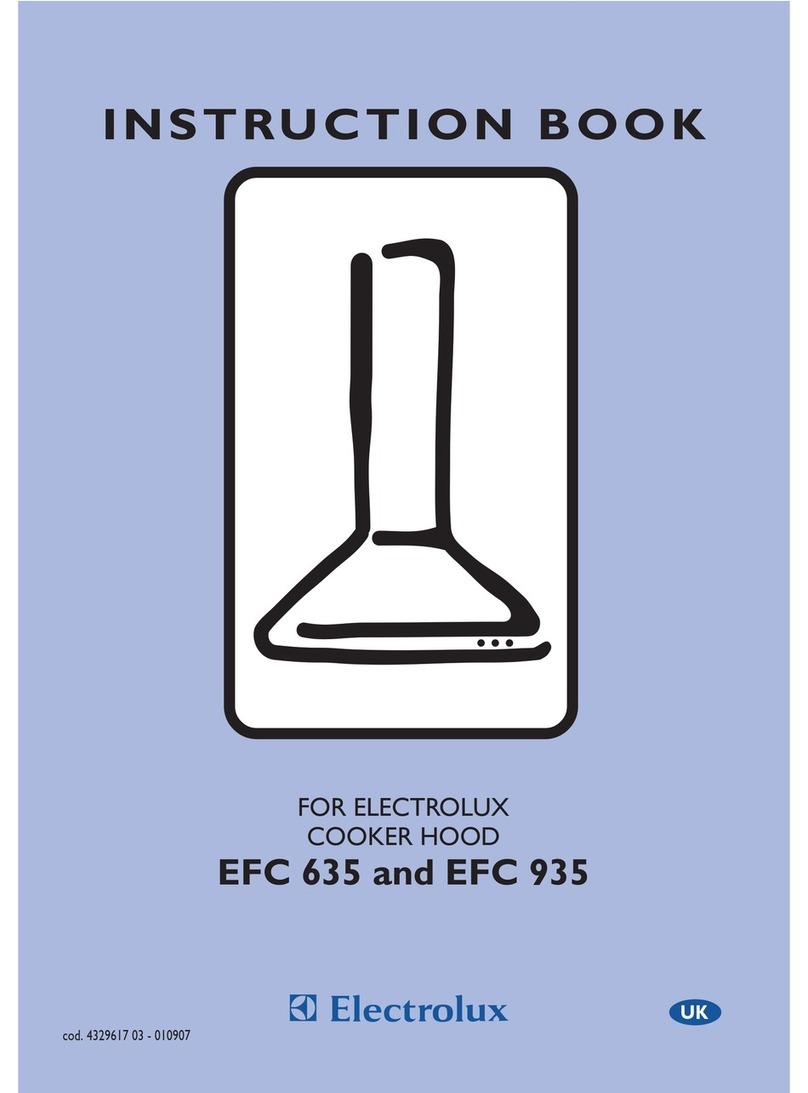
Electrolux
Electrolux EFC 635 X Instruction book
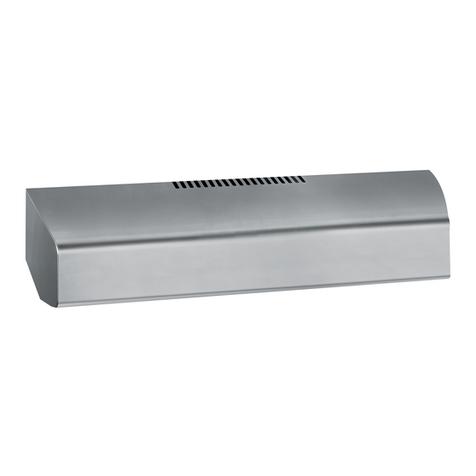
GE
GE JV535 Owner's manual and installation instructions
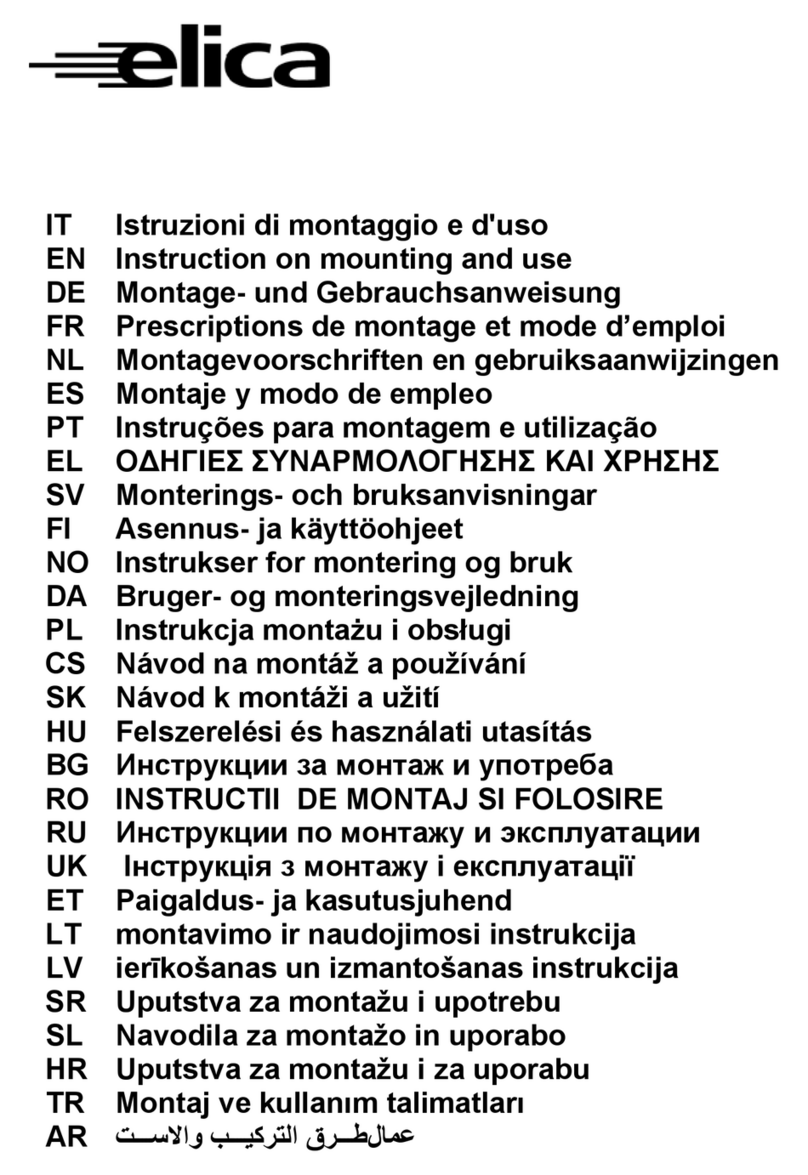
ELICA
ELICA FS 74710 Shell Instruction on mounting and use
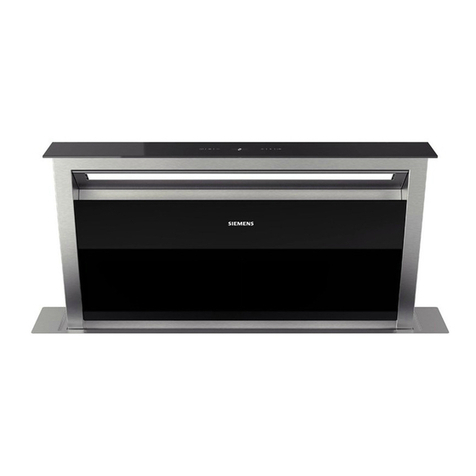
Siemens
Siemens LD97AA670 instruction manual
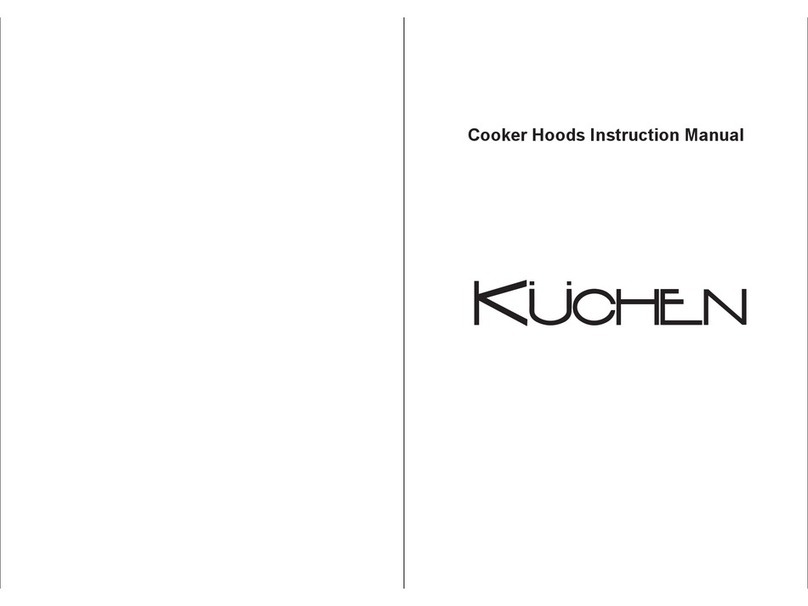
kuchen
kuchen HCF Series instruction manual
